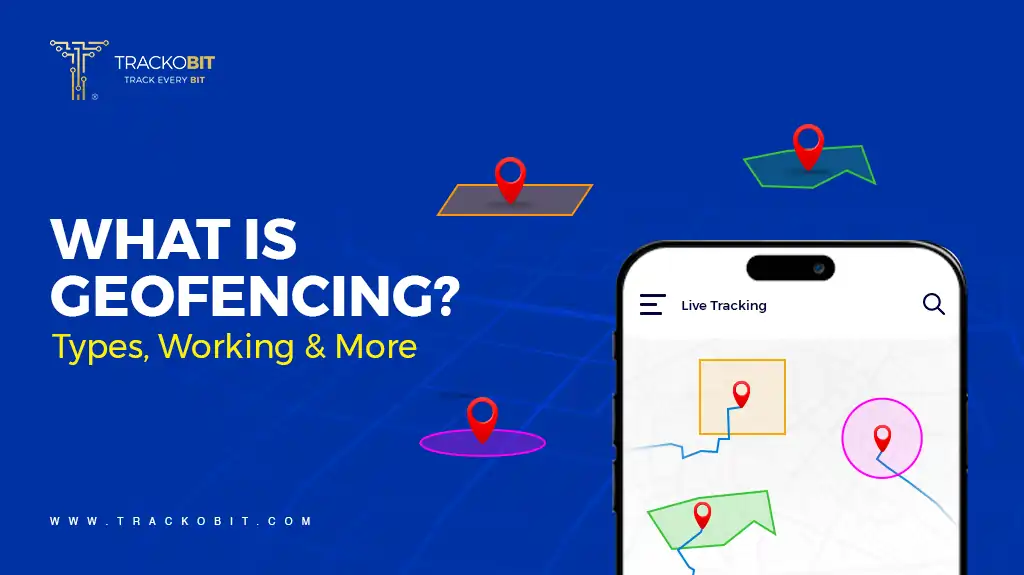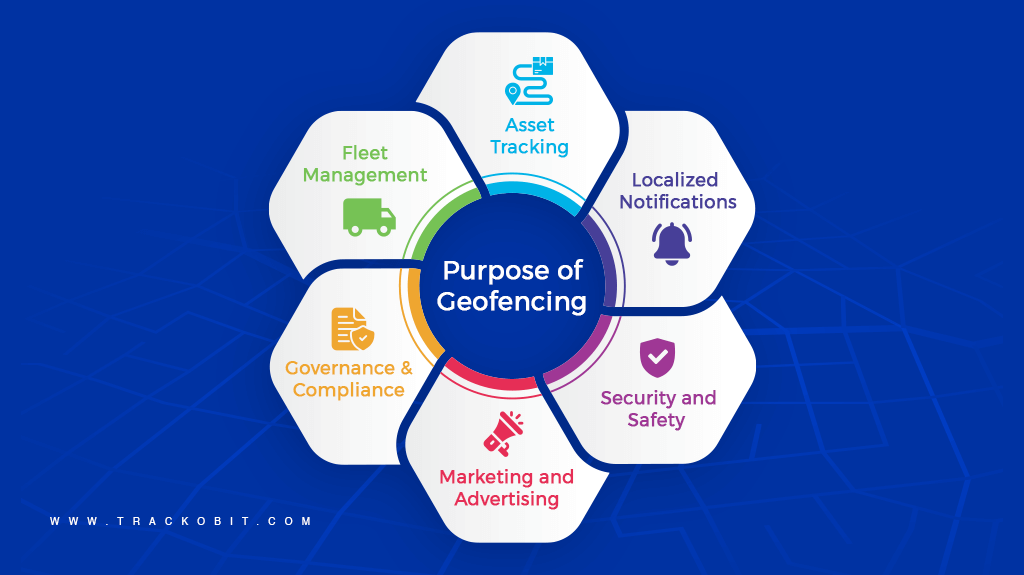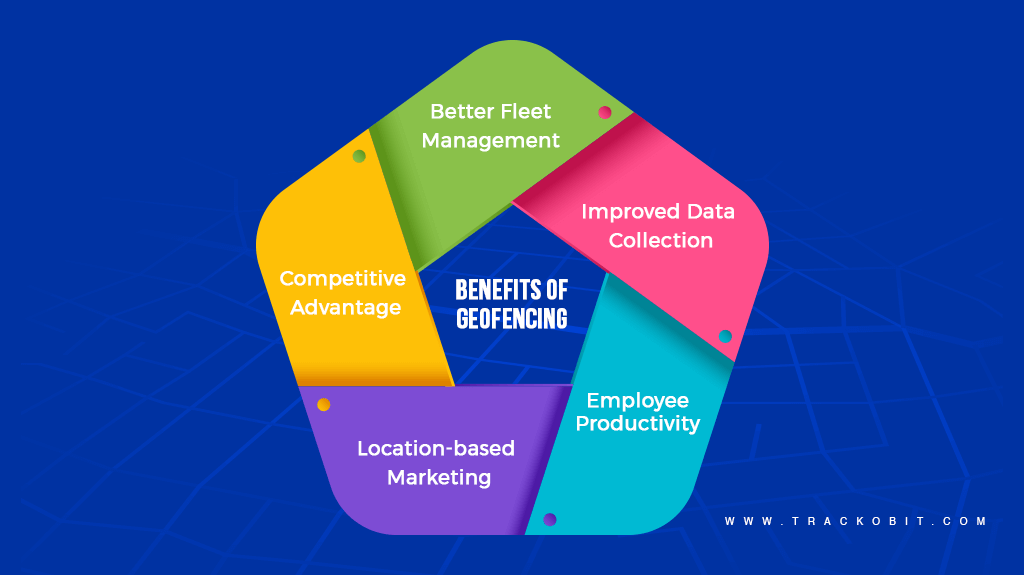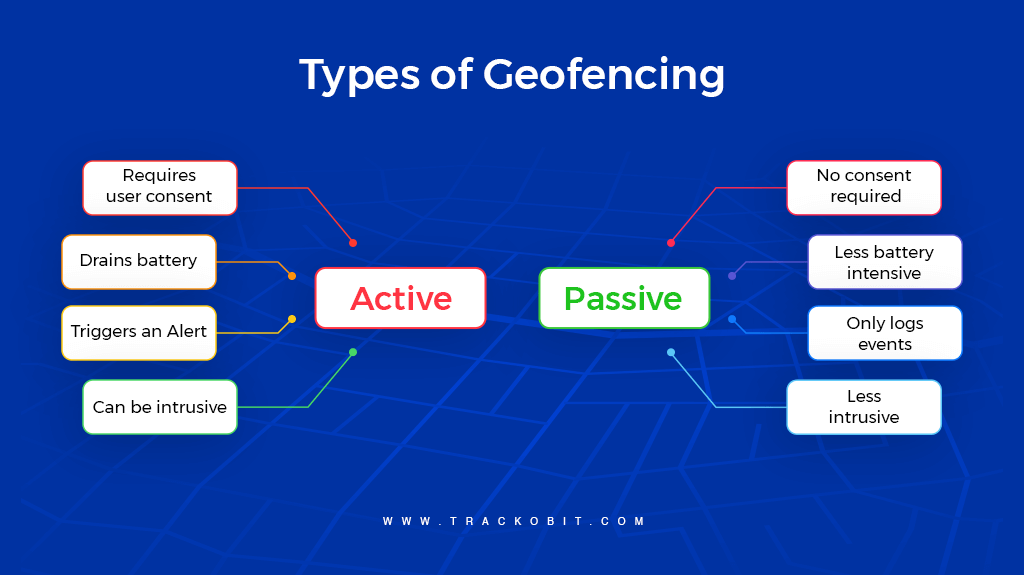-
TrackoBit
Manage commercial vehicles with the new-age Fleet Management Software
TrackoBit -
TrackoField
Streamline your scattered workforce with Field Force Management Software
TrackoField -
Features Resources
-
Blog
Carefully curated articles to update you on industrial trends. -
White Paper
Insightful papers and analysis on essential subject matters. -
Glossary
Explore an alphabetical list of relevant industry terms. -
What’s New
Get TrackoBit & TrackoField monthly updates here. -
Case Study
Explore the cases we solved with our diverse solutions. -
Comparisons
Compare platforms, features, and pricing to find your best fit.
-
About Us
Get to know TrackoBit: our team, ethos, values, and vision. -
Careers
Join the most dynamic cult of coders, creatives and changemakers. -
Tech Support
Learn about our technical support team and services in detail. -
Events
Check out the exhibitions where we left our marks and conquered. -
Contact Us
Connect with us and let us know how we can be of service.
What is Geofencing? Types & How It Works?
- Author:Anvesha Pandey
- Read Time:8 min
- Published:
- Last Update: August 22, 2024
Table of Contents
Toggle
Googling about geofencing? Here is a guide that is going to answer all your 5Ws and 1H’s about everything revolving around geofencing.
Table of Contents
Toggle
Ever walked into a store you haven’t visited in years, only to be greeted by a personalized discount offer on your favorite shoes? Geofencing, my friends, is like that annoyingly helpful friend who remembers everything (except your birthday, of course). But hey, at least it saves you money!
Well, enough getting humorous- let’s just cover the A-Z of geofencing. From its definition to its working and the use cases- this guide has covered everything for you.
What is Geofencing?
| 🔉 geofence- definition
/ˈdʒiːə(ʊ)fɛns/ noun noun: geofence; plural noun: geofences; noun:geo-fence; plural noun:geo-fences a virtual geographical boundary, established through GPS or RFID technology that allows the software to initiate a response whenever a mobile or any other device enters or exits a specific region. |
To explain in detail, geofencing is a location-based technology that allows fleet managers to draw over a physical location with the help of GPS (Global Positioning System), RFID(Radio-Frequency Identification), Wi-Fi, or cellular data to initiate an action (such as a text message, email, social media advertisement, or application notification. Geofences enable automatic actions or notifications upon entering or exiting a designated zone.
Well if this sounds a bit complicated to you, here’s a small example to explain the concept of geofences. You might have noticed when you walk by an H&M store at the mall, you instantly receive a notification that says: “Sale Up to 50% off.”- This happens due to the geofence technology.
How Geofencing Works and the Purpose of Geofencing
Working of Geofencing
There are various steps involved in the working of geofencing including
1) Marking/ Defining the Geofences
Fleet managers can set up a virtual boundary around a specific geographical area using GPS coordinates or other location-based technologies. This can be simply done through specialized geofencing software or applications.
2) Device Tracking
The devices within the geofenced area need to be equipped with location-based technologies, such as GPS or RFID. When these devices enter or exit the defined area, their location is tracked in real-time.
3) Triggering Actions
Based on the device’s entry or exit from the geofenced area, predefined actions are triggered. Further, these actions can include sending notifications or triggering alarms.
Now that you have understood the functioning of geofences, let’s briefly understand the purpose of geofencing.
Purpose of Geofencing
1) Marketing and Advertising
Businesses can use geofencing to send targeted messages or promotions to customers who are near their location.
2) Fleet Management
Fleet-centric businesses use geofencing to monitor driver behavior and keep a vigil to ensure the safe operations of delivery vehicles.
3) Asset Tracking
Businesses and companies mostly use geofencing to track the location of their assets, such as vehicles, equipment, or even employees. This can help to prevent theft, improve efficiency, and ensure safety.
4) Localized Notifications
Geofencing can be used to trigger location-based alerts, such as providing directions or information about nearby points of interest. For example, a museum might notify visitors when they enter a new exhibit.
5) Security and safety
Geofencing can be used to create virtual safety zones, such as around schools or construction sites. If someone enters the zone without authorization, security personnel can send an alert.
All over, geofencing is a versatile technology with applications in marketing, security, logistics, and various other fields, providing a powerful tool for location-based automation and interaction.
6) Governance and Compliance
In certain industries, geofencing is used to enforce regulatory compliance by defining boundaries within which specific activities are allowed or restricted.

Benefits of Geofencing
Geofencing provides an array of benefits across various industries. Here are some of the key advantages of geofencing.
1) Better Fleet Management
Geofencing in fleet management enhances efficiency and security. It improves overall vehicle safety and provides alerts for unauthorized access or potential risks. This technology streamlines operations, minimizes downtime, and contributes to cost-effective and streamlined fleet management.
2) Location-based Marketing
Location-based geofencing allows businesses to send targeted advertisements or promotions to users’ smartphones when they enter an undefined geographical area. This can be highly effective in attracting customers to nearby events. Hence businesses can target better with geofencing.
3) Improved Data Collection
Geofencing allows businesses to gather valuable data on consumer behavior within specific locations. This information can include the frequency of the visits, dwell time, and popular areas within a geofenced zone. Analyzing this data helps businesses understand consumer preferences and optimize marketing strategies.
Also, in addition, geofencing software allows businesses to streamline the performance of their marketing campaigns in real-time with the help of real-time tracking. By measuring the effectiveness of location-based promotions or advertisements, businesses can make data-driven decisions to enhance their marketing efforts.
Here is this important stat supporting the above statement. . Almost 90% of marketers saw improvements in sales, customer engagement, and audience understanding with location-based marketing.
4) Employee Productivity
Geofencing can be integrated into various business processes as they trigger automated actions based on an employee’s location. Geofencing can also help assist in managing remote or field-based teams by tracking their locations during work hours. This helps ensure that employees are where they are supposed to be, aiding in accountability and time management.
5) Competitive Advantage
Geofencing offers numerous advantages for enhancing customer experience through targeted marketing and personalized offers. By delivering timely and relevant promotions as customers approach the store, businesses can distinguish themselves from their competitors.

| 🔎 Numerous prominent franchises like Amazon, Burger King, and Starbucks have employed this strategy of geofencing. |
Types Of Geofencing
Geofencing can be categorized into different types by considering factors such as activity and shape.
By Activity-
- Active Geofencing
This type requires the users to have a specific app open on their device that uses GPS to track the location. Wherever the user enters or exits a predetermined geofence, the application triggers a pre-programmed action, such as sending a push notification or warning.
- Passive Geofencing
This type of geofencing does not require any particular application that uses a cell tower triangulation or Wi-Fi positioning to track the device’s location. It’s less accurate than active geofencing but consumes less battery power. Passive geofencing is primarily used for collecting data about drivers’ behavior, such as stops where they stop, the time they spend at the halt, and more.

By Shape-
- Circular or Radius Geofencing
This is the most common type of geofence. Fleet managers can mark a circular area around a point of interest. The radius can be of any size, from a few meters to several kilometers.
- Polygon Geofencing
This type of geofence allows you to create a virtual boundary with any shape, such as a square, rectangle, or even a complex shape like a building or park. By utilizing polygonal geofences, you can encircle a precise area of significance, thereby enhancing the quality of data and enabling accurate audience targeting.
How to Mark Geofence for any Vehicle with TrackoBit?
Setting geofence for the multitude of vehicles shouldn’t be a hassle. Here’s how TrackoBit helps you simplify the process by following simple steps.
Once you choose this solution, you can follow these steps to mark your geofences and improve the functioning of your fleet.
Step 1- Create a geofence
First, find your location on a digital map. Then, set the boundaries for your virtual perimeter.
Step2-Customize Accordingly –
With TrackoBit, you can include the entities you want (for instance, group, vehicle, and assets), customize the shape according to your needs, markers (location), and halt timings at a prescribed geo-fence as well.
Step 3- Set up notifications
Now finally, set up your notification alerts for the actions you want to monitor. This is also completely customizable in terms of the alerts you want for which vehicle at which particular geofence.
Geofencing Statistics
Geofencing has the potential to deliver remarkable outcomes for marketers seeking to implement highly targeted, location-based marketing due to evident reasons.
However, we are not asking you to rely on our words because we have also brought in some facts and figures for you.
- 92 percent of smartphones are compatible with geofencing.
- According to a study conducted by Frost & Sullivan, the incorporation of geofencing technology into fleet management systems has the potential to achieve fuel savings of up to 15%.
- Geofencing campaigns have proven to be 10 times more efficient than alternative marketing tactics, such as email campaigns.
How can a Geofence Be Used In Fleet Management?
Well, there are numerous methods in which fleet managers can utilize geofencing technology to streamline and enhance fleet management. This section of the guide presents various examples of the use cases of geofencing.
- Trucking companies can decrease the amount of time spent waiting at loading docks by utilizing alerts, which offer advance notice of an impending arrival for either shipping or receiving purposes.
- Construction sites can tackle the theft of expensive equipment by receiving notifications whenever a valuable asset is unexpectedly moved or utilized.
- Energy and oil and gas companies can benefit from being aware of the arrival or departure of field crews from distant locations.
Business fleets are restricted within designated zones. Followed by notifications that alert drivers and fleet managers about any deviations from the geofenced area.
Read Blog – What Are Geofences in GPS Tracking Software?
Making the Best Use of Geofencing
Knowing what geofencing is and its benefits alone will not help you make the best use of the technology. The below-mentioned practices can help you see the productivity and profitability gains.
- Set your goals and measurements
Effective geofencing software can be user-friendly to facilitate the creation of virtual boundaries and alerts. However, sometimes the rules and compliance with the technology may affect the usefulness of the technology. With any geofence, it’s important to have a clear understanding of what you’re aiming for before setting it up. This allows you to determine what information that constraint should trigger and who should receive it.
- Communicate with drivers and employees
When setting up your alerts and creating a geofence, it’s important to consider who will benefit most from the information provided. A well-designed geofence can increase efficiency and productivity for drivers and fleet managers. But for your efforts to be truly valuable, you need the right information. If a manager receives weekly email summaries of potentially useful data for others in real time, then you’re not maximizing the power of this software at all.
📌Fun Facts About Geofencing – You Didn’t Know!
|
Summing Up
To sum it all up, Geofencing can increase vehicle, asset, and driver safety. Plus it adds great value to various industries including marketing, fleet management, and more. Geofencing may appear just a small bit in the extensive world of fleet management. Nevertheless, its versatility combined with historical data reports and alerts establishes it as an inexhaustible resource of practical applications.
Utilizing geofencing to enhance your fleet operations, monitor driver behavior, and enhance surveillance capabilities! Therefore, it is essential to employ GPS tracking software that effectively utilizes geofences. TrackoBit can be a great bet.
FAQs
-
What are the challenges to Geofencing?
Geofencing faces challenges such as privacy concerns, potential data misuse, and compliance. Balancing the benefits of location-based services with user privacy is also important to address legal issues. Furthermore, technical challenges such as signal accuracy and battery consumption need to be investigated for the effective implementation of geofencing.
-
What is the future of geofencing?
The future of geofencing holds promising advancements in personalization, automation, and seamless integration with emerging technologies like augmented reality. Enhanced privacy measures, improved analytics, and widespread adoption across industries are expected, making geofencing a pivotal tool for businesses in optimizing engagement, security, and operational efficiency.
-
What is the difference between Geofencing, Geotargeting, and Geo-location?
Geofencing establishes virtual boundaries to trigger actions, alerts, or announcements when a device enters or leaves a designated area. Geotargeting tailors products or ads based on location, to deliver relevant content. Geolocation is a broad term that includes any method of pinpointing the physical location of a device, including a GPS or IP address bar.
-
What is the cost and pricing of geofencing?
Geofencing costs vary depending on factors such as platform, features, and usage. The monthly cost of geofencing software can range from $20 to several hundred dollars. Additional costs may include setup costs, customization, and data storage costs. Large enterprise solutions may have multiple price points depending on specific business needs.
Anvesha is a communication specialist at TrackoBit. With a strong background in media and communications, she adds much-needed balance and brevity to TrackoBit’s... Read More
Related Blogs
-

When Tracking Needs a Clock: Rethinking Fleet Visibility
Tithi Agarwal December 24, 2025Read on to understand why fleet tracking works better when it follows working hours. Because visibility should support operations, not…
-

What Makes TrackoBit’s Video Telematics Software Truly Next-Gen?
Shemanti Ghosh December 17, 2025TrackoBit’s video telematics software blends smart video intelligence with full server control. The result? Superior fleet reliability and safety.
-

Plug, Pair, Perform TrackoBit Introduces BLE Sensor Integration
Tithi Agarwal November 26, 2025TrackoBit’s BLE Sensor Integration enables wireless, real-time monitoring with faster installs and accurate insights. It improves fleet efficiency, visibility, and…
-

How to Use Driver Behavior Reports as a Sales Hook to Close Big Fleets
Tithi Agarwal October 16, 2025TrackoBit’s driver behavior reports empower fleet providers to win big contracts by showcasing safety, efficiency, and measurable ROI.

Subscribe for weekly tips to optimize your fleet’s potential!
Your inbox awaits a welcome email. Stay tuned for the latest blog updates & expert insights.
"While you're here, dive into some more reads or grab quick bites from our social platforms!"Stay Updated on tech, telematics and mobility. Don't miss out on the latest in the industry.
We use cookies to enhance and personalize your browsing experience. By continuing to use our website, you agree to our Privacy Policy.


































